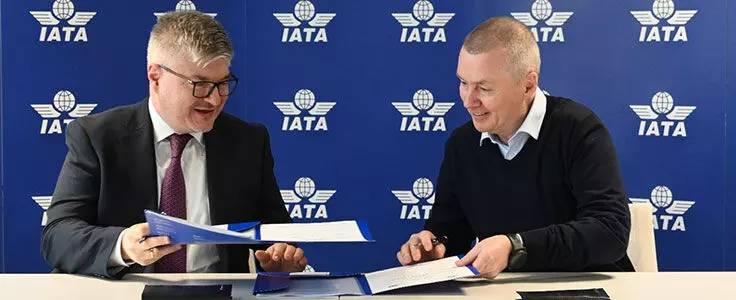
IATA, ICAO extend cooperation for dangerous goods shipments
Agreement ensures continued adherence to highest global standards for handling dangerous goods

L-R: Juan Carlos Salazar, Secretary General, ICAO; Willie Walsh, Director General, IATA
The International Air Transport Association(IATA) and the International Civil Aviation Organization (ICAO) have extended their long-standing cooperation on setting and implementing global standards for the safe carriage of dangerous goods by air.
An agreement to this effect was concluded at the IATA executive offices in Geneva during a visit by Juan Carlos Salazar, Secretary General, ICAO, according to a release from IATA.
A greater collaboration between the two organisations was also discussed during the visit, the release added.
“The safe carriage of dangerous goods has become common practice, thanks to the strict adherence to global standards and guidelines. Today’s agreement ensures that dangerous goods will continue to be handled according to the highest globally applicable standards. To this effect, IATA will continue its advocacy work with key stakeholders to maintain a globally aligned, and practically focused approach to the regulated transport of dangerous goods. This will lead to more efficient and robust supply chains whilst upholding aviation’s number one priority of safety,” said Willie Walsh, Director General, IATA.
IATA began issuing guidance for the carriage of dangerous goods on aircraft in 1956, and has been updating and devising standards ever since, the release added. A more formalised approach on this subject was taken at a regulatory level by the adoption of ICAO Annex 18 in January 1984. This outlines the broad principles for the international transport of dangerous goods. “Technical Instructions For The Safe Transport of Dangerous Goods by Air” amplifies the basic provisions of Annex 18 and contains all the detailed instructions necessary for the safe international transport of dangerous goods by air.
Based on the technical instructions agreed on at the government level through ICAO, IATA works with the aviation industry to develop the applicable practical tools and operational recommendations. These are issued as the Dangerous Goods Regulations and are global standards applicable to the entire value chain – manufacturers, shippers, airlines, freight forwarders and ground handlers. These regulations include operator variations, supporting documents, tools, guidelines and notes which are essential for a practical, consistent approach to the safe acceptance, inspection, handling and carriage of dangerous goods on aircraft, the release added.

